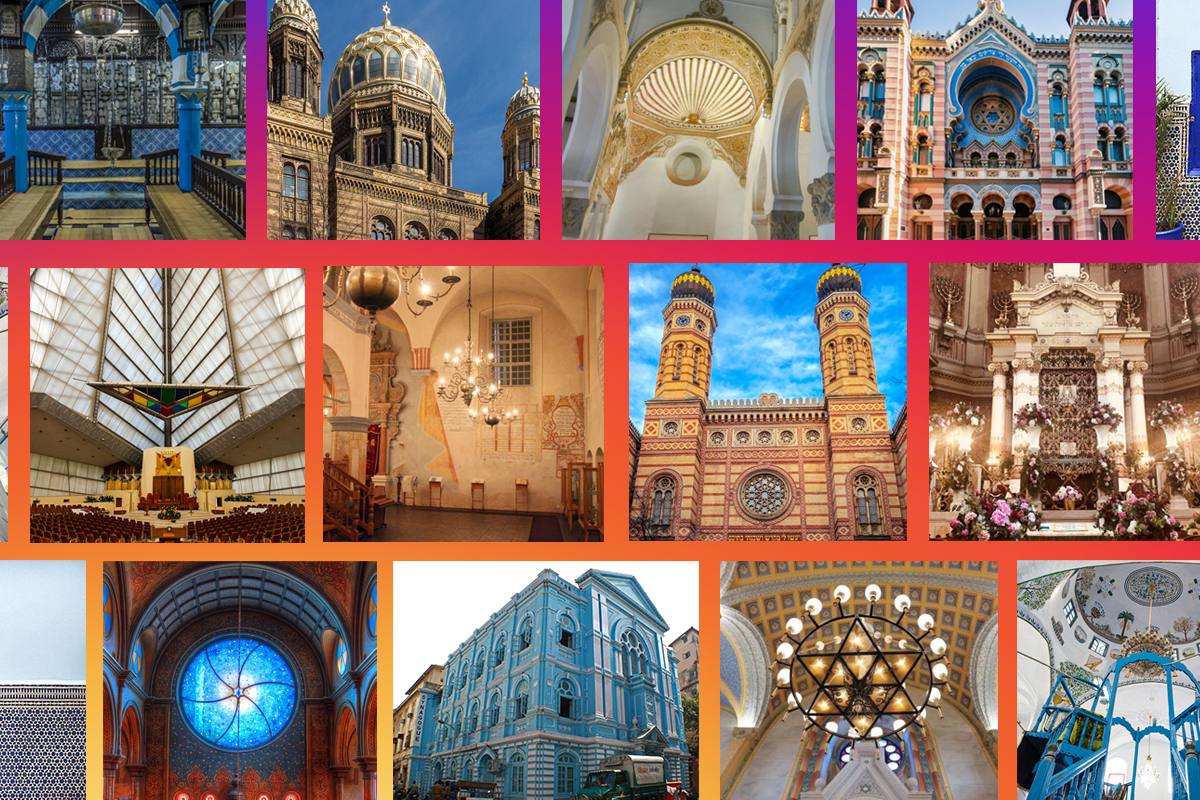Synagogues are some of the most beautiful sites of Jewish heritage and culture in the world. From Tunisia to Mumbai to New York — and from Sephardi to Ashkenazi to Mizrahi congregations — these synagogues are jaw-droppingly beautiful. There are Stars of David stained glass, elaborate candelabras, and stunning bimahs. There’s Moorish revival to art nouveau styles. Each is worth a visit, and yes, an Instagram post (or twelve).
This list is in no way comprehensive, and there are so many beautiful synagogues in the world. Without further ado, here are 15 of the most Instagrammable synagogues in the world:
Dohány Street Synagogue
Budapest, Hungary
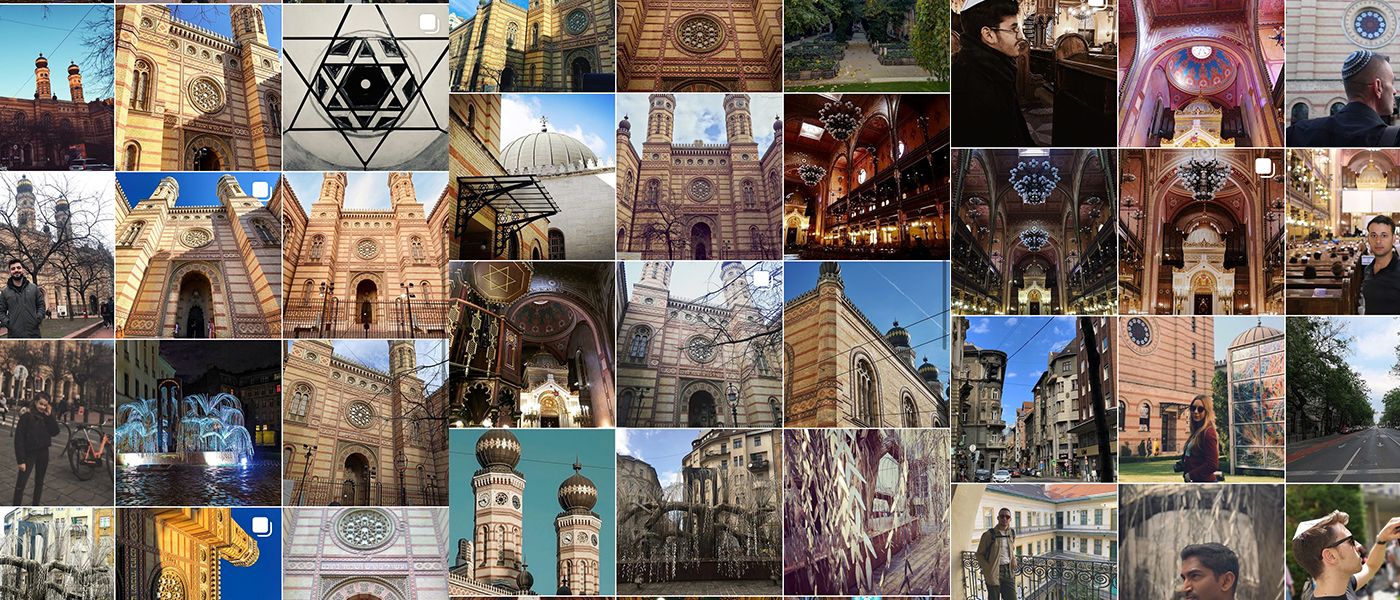
Also called “The Great Synagogue,” the Dohány Street Synagogue is the largest synagogue in Europe and the second largest synagogue in the world. It was built between 1854 and 1859, styled on Islamic buildings. In February 1939, the Hungarian pro-Nazi Arrow Cross Party bombed the synagogue. During WWII, the building was bombed during aerial raids. Its restoration began in 1991, and it also houses a Jewish museum. It now has European heritage status.
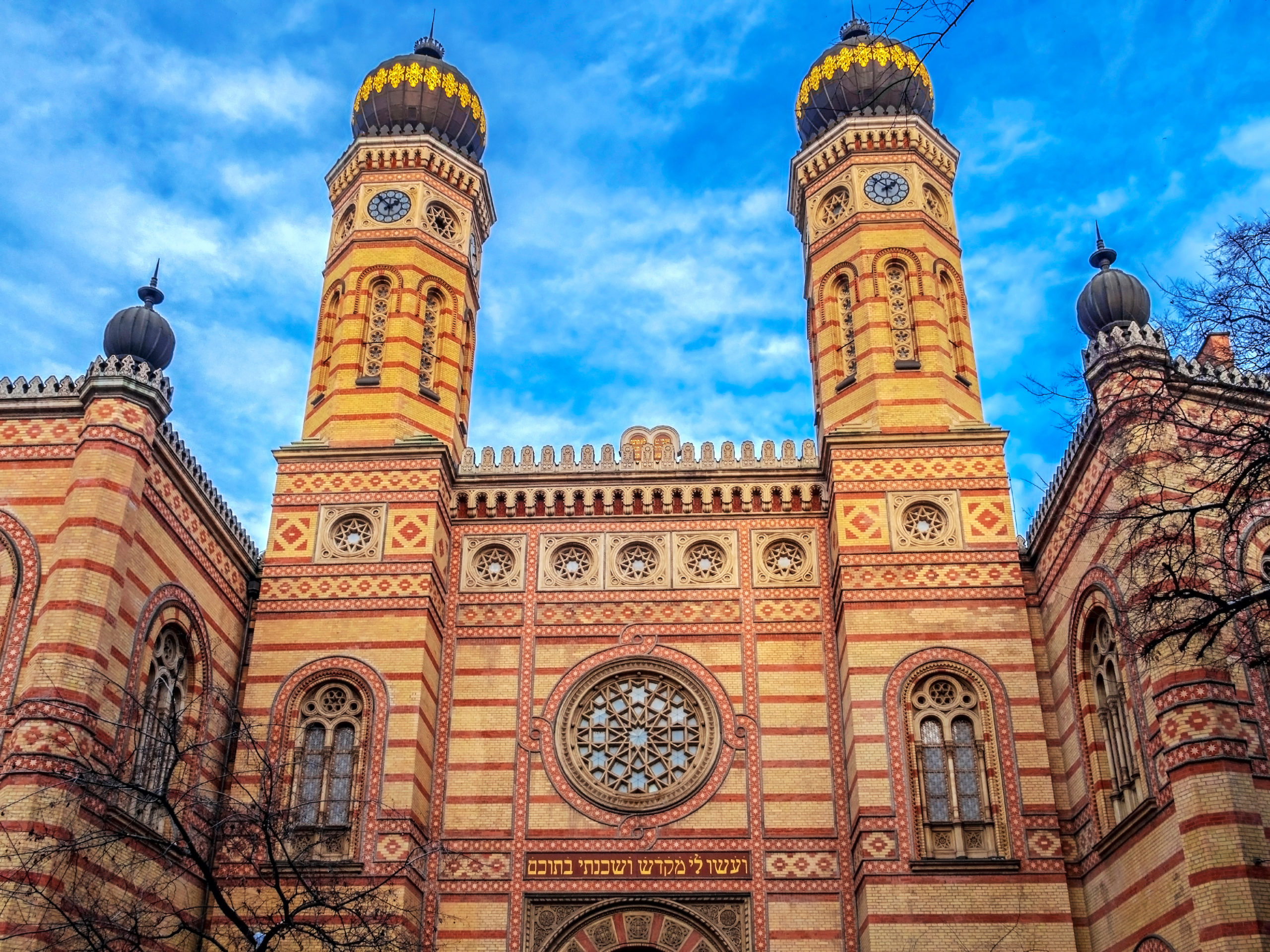
What makes it Instagrammable: The freakin’ building! Do you see it!?!? Scroll through posts here.
Slat Lazama Synagogue
Marrakesch, Morocco
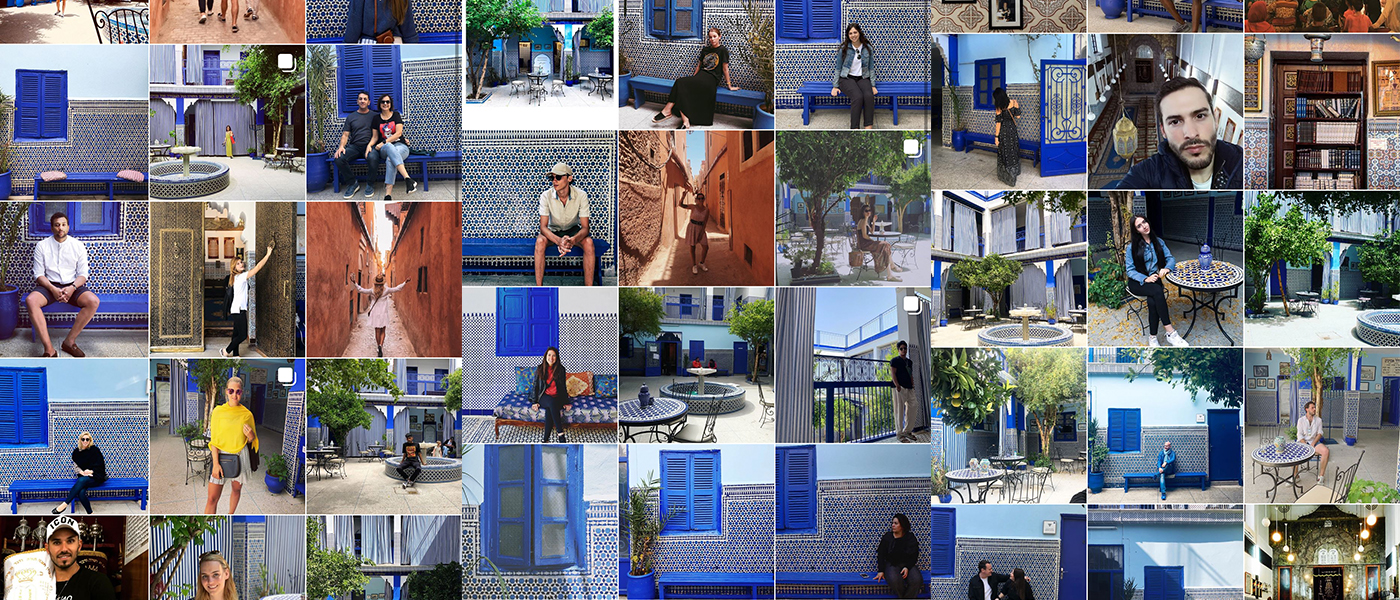
The Lazama Synagogue (also called Slat el Azama, Al Azama, or Lazama) is in mellah, the walled Jewish quarter of Marrakech. Starting in the late 1400s, Jewish people in Morocco were confined to mellahs. This synagogue was built in 1492 by Jews expelled from Spain; Al Azama means “those who ran away from Spain,” and it was known as the “synagogue of the exiles.” The synagogue is part of a complex of buildings around a central courtyard, called a riad (an inward-turning building). It was restored in 2005. It now doubles as a museum about Moroccan Jewish history.
What makes it Instagrammable: the Star of David blue tile walls that feature in most posts. Scroll through posts here.
Tykocin Synagogue
Tykocin, Poland
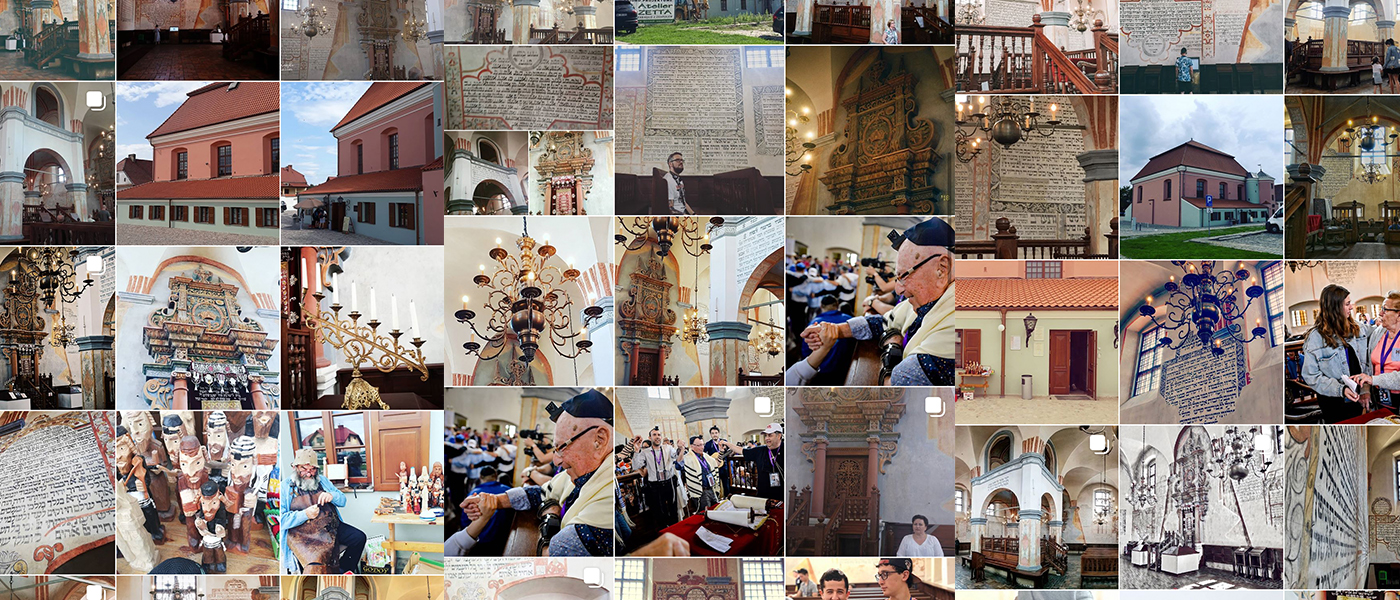
The Tykocin Synagogue was built in 1642 and is considered “one of the finest synagogues in Poland.” It’s now also the oldest synagogue in Poland. However, there’s a dark history: “During World War II, after Poland was occupied by Nazi Germany, part of the synagogue was destroyed and what remained was used as a warehouse. The local residents carried out several pogroms against the Jews, confiscated property and encouraged them to flee. In August 1941, the Nazis assembled all the Jews of the town — about 2,500 in number — in the central square and sent 1,400 of them to the nearby Lopochova Forest, where they were shot and buried in pits. About 150 people managed to escape to the Bialystok ghetto.” Now, no Jews live in Tykocin, but the synagogue, which was restored in the late 1970s, remains a major tourist destination.
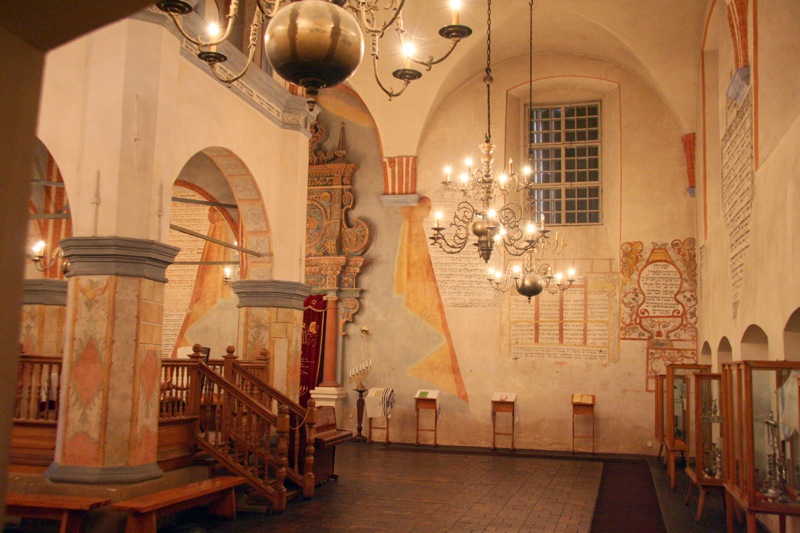
What makes it Instagrammable: While the building may look simple on the outside, inside, there are gorgeous historic wall paintings of Hebrew prayers. Scroll through posts here.
Great Synagogue of Rome
Rome, Italy
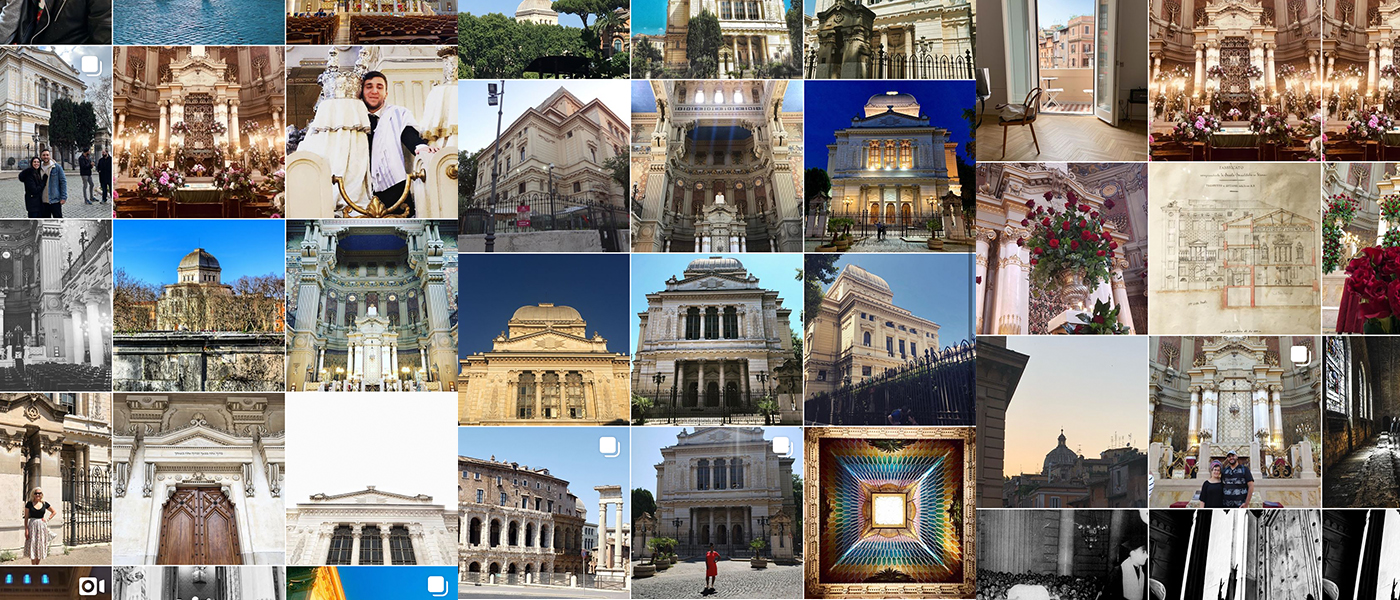
The Great Synagogue of Rome was built from 1901 to 1904, a few decades after the destruction of the Roman Ghetto in 1870. (The Jewish community of Rome was forced to live in the Roman Ghetto from 1555 until 1870.) In 1982, the synagogue was the site of a terrorist attack, when Palestinian terrorists threw hand grenades and sprayed machine gun fire. A 2-year-old toddler, Stefano Gaj Taché, was killed; 37 were injured. In 1986, Pope John Paul II visited the Great Synagogue — the first time in history a pope ever visited a synagogue. (In 2010, Pope Benedict XVI visited, and in 2016, Pope Francis visited.)
Every year on Shavuot, the synagogue is decorated with thousands of flowers:
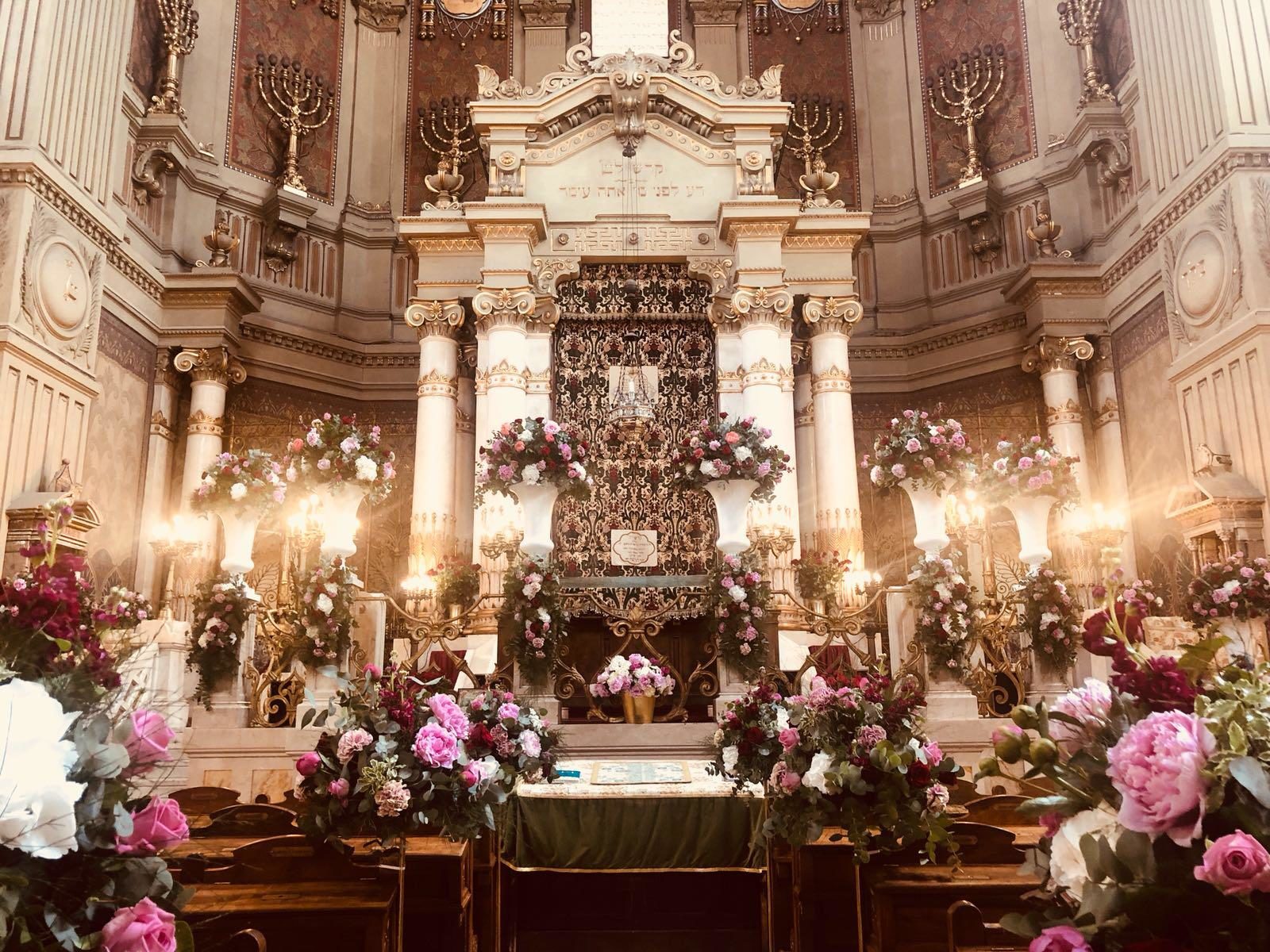
What makes it Instagrammable: The rainbow ceiling! The arc! The beautiful exterior! The flowers on Shavout! It’s truly magnificent. Scroll through posts here.
Synagogue Santa María La Blanca
Toledo, Spain
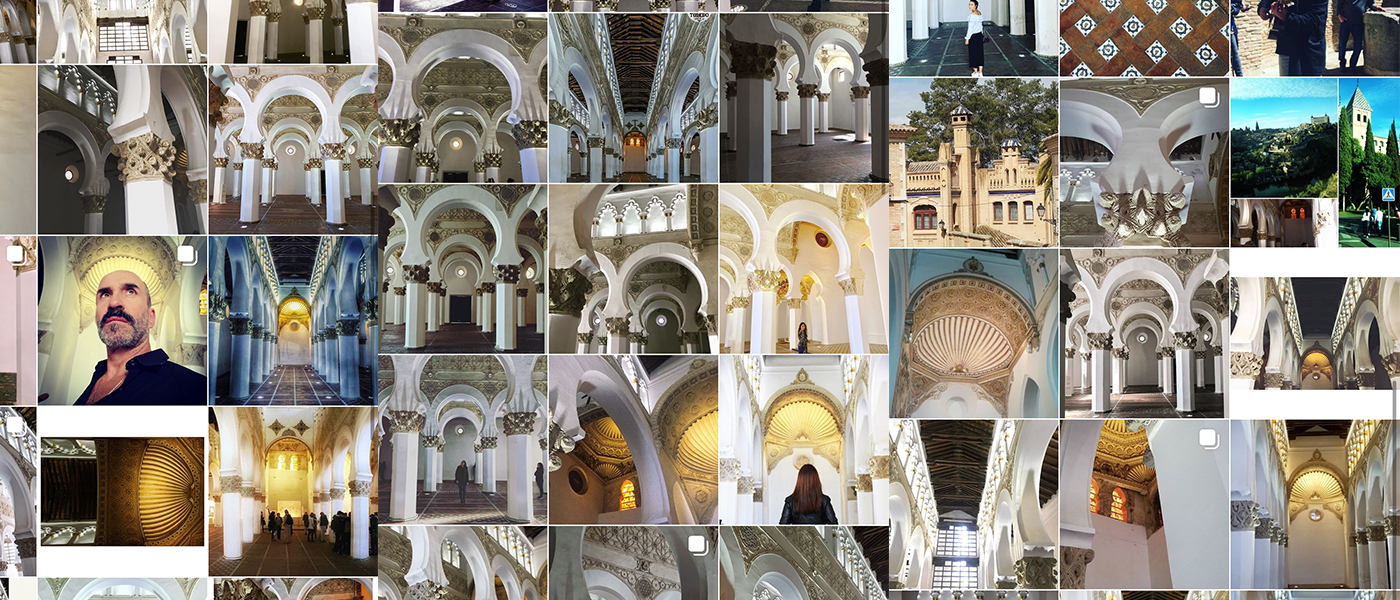
Also known as the Ibn Shushan Synagogue or the Congregational Synagogue, the Synagogue of Santa María la Blanca is the oldest synagogue building in Europe still standing. It was built in Moorish style in 1180. In 1391, a Dominican priest, Vincente Ferrer, preached a series of sermons against the Jews — he incited a pogrom; almost all of the Jews of Toldeo were murdered. The synagogue building was turned into a church in 1405 or 1411. In 1550, it became home to an order of monks. The Catholic Church still owns the building; the Jewish community of Toledo is currently petitioning the Archbishop of Toledo to transfer ownership to them. As of now, no response.
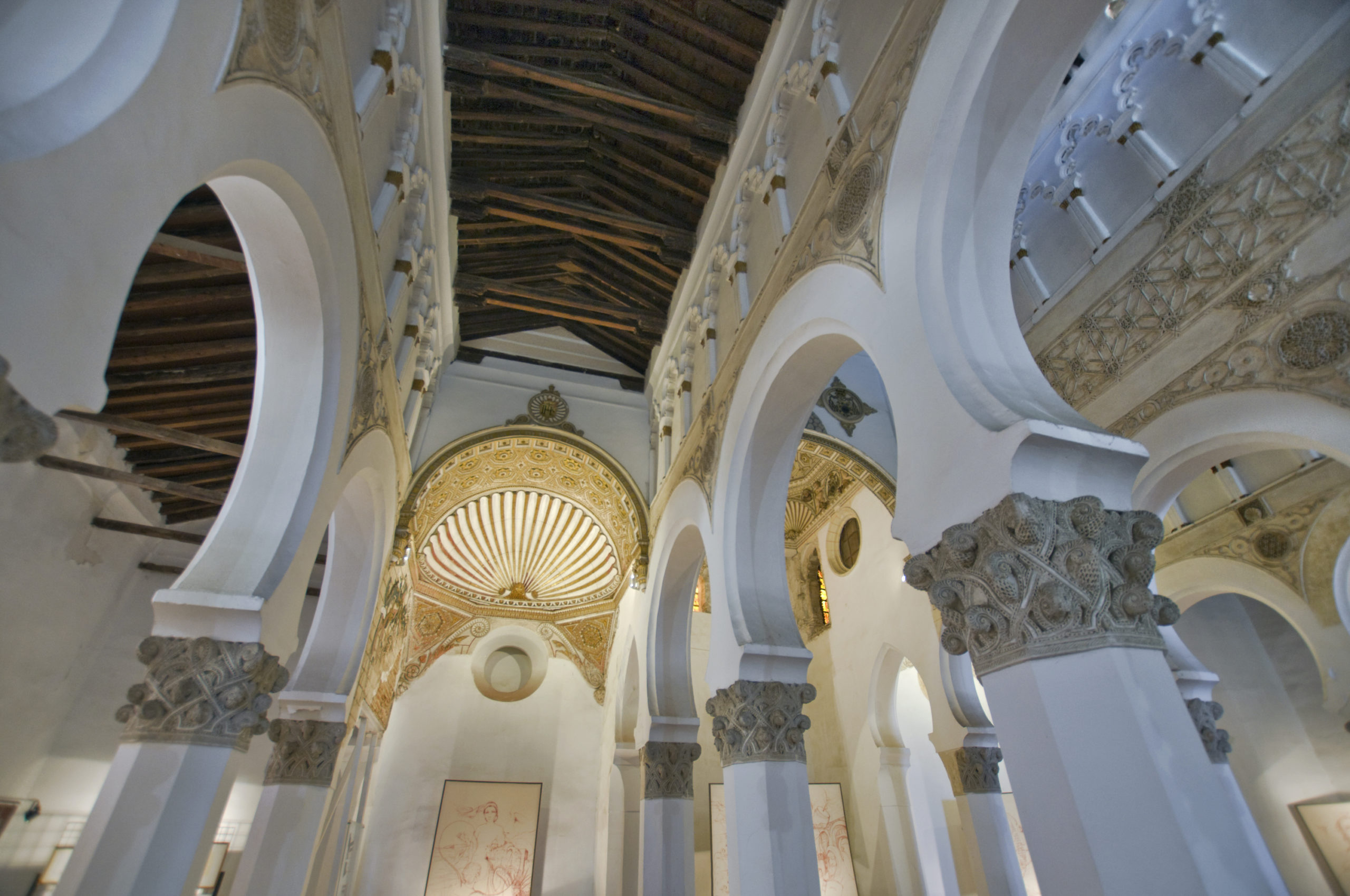
Tempio Maggiore
Florence, Italy
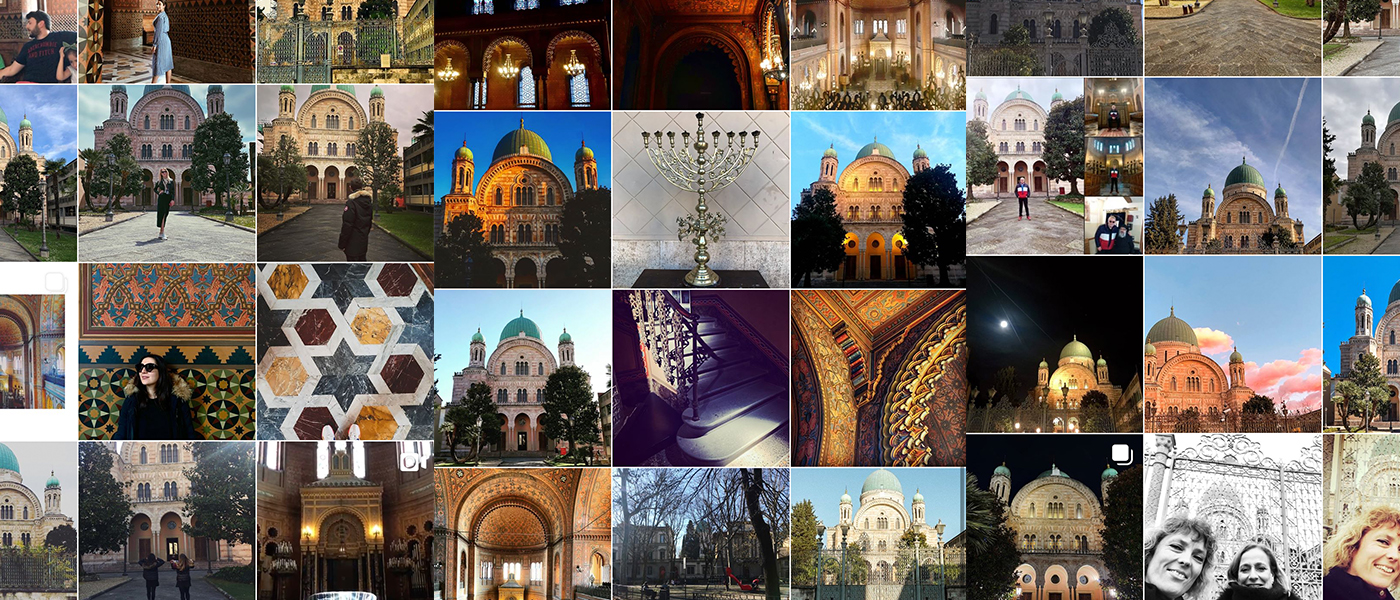
The Great Synagogue of Florence, called the Tempio Maggiore, was built between 1874 and 1882. “As it was intended to serve the local Sephardi community of Florence, the design selected for the Great Synagogue of Florence includes many architectural motifs that have been borrowed from the Moorish traditional architecture of Spain.” During World War II, Nazis used the synagogue as a storehouse. After the war, it was restored. On top of the synagogue is a massive dome, and two turrets.
What makes it Instagrammable: The dome building. Scroll through posts here.
El Ghriba Synagogue
Djerba, Tunisia
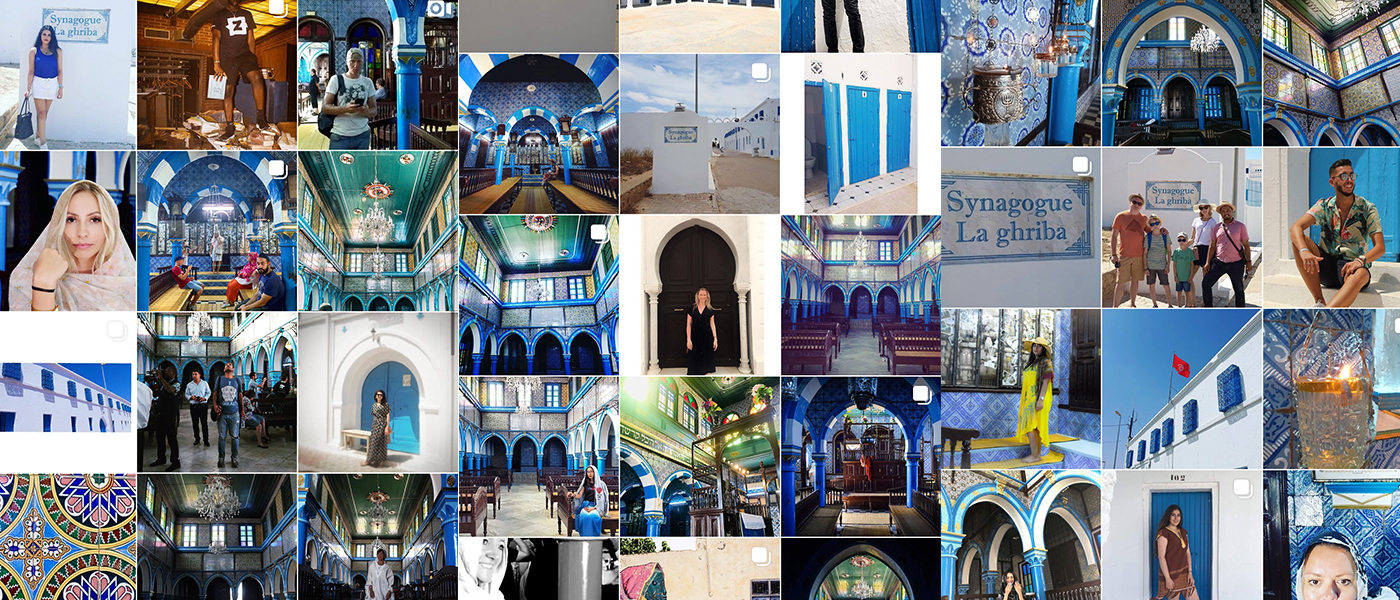
El Ghriba Synagogue, also called the Djerba Synagogue, is on an island off the coast of Tunisia. It’s the oldest synagogue in Tunisia, and the oldest synagogue in the entirety of Africa. According to local legend, “the beginnings of the synagogue are thought to be connected to the establishment of the earliest Jewish settlement on the Island of Djerba by a group of cohanim, priests from the Temple of Jerusalem, who supposedly settled on the island immediately after the destruction of the First Temple of Jerusalem by the Babylonians in 586 BCE. The tradition has it that these refugees brought with them a door and a stone from the altar of the destructed Temple.”
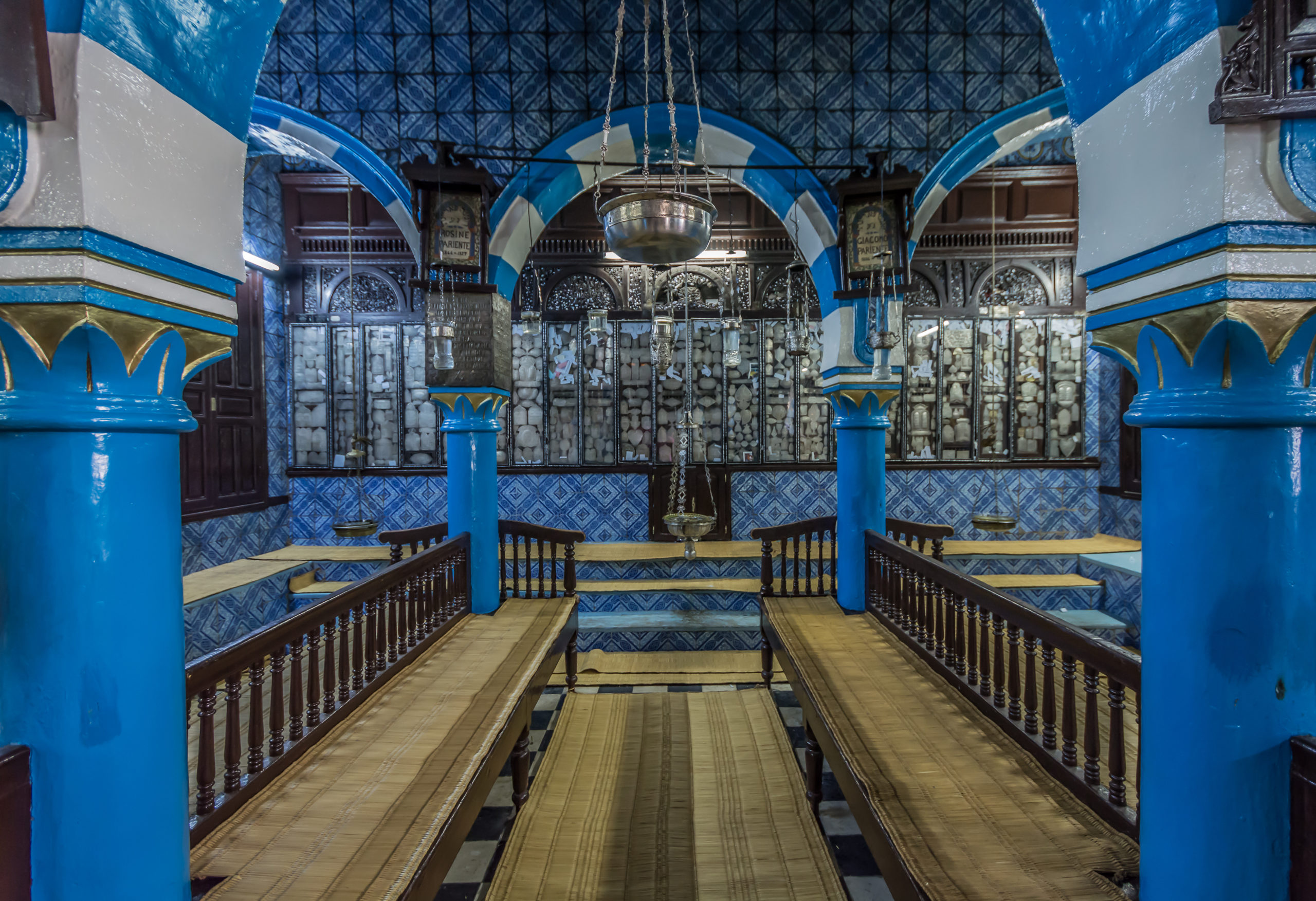
El Ghriba Synagogue has dealt with tragedy: In 1985, during Simchat Torah, a local policeman who was supposed to be protecting the synagogue opened fire on the celebrating crowd, killing three and wounding 15. In 2002, a bomb detonated near the synagogue, killing 21; Al Qaeda claimed responsibility. In 2018, the synagogue was firebombed. Read more: In Tunisia, an ancient Jewish community braves uncertain future.
What makes it Instagrammable: The colors and the gorgeous mosaics inside the synagogue. Plus, lots of people post the chandelier inside. Scroll through posts here.
Eldridge Street Synagogue
New York, New York, United States
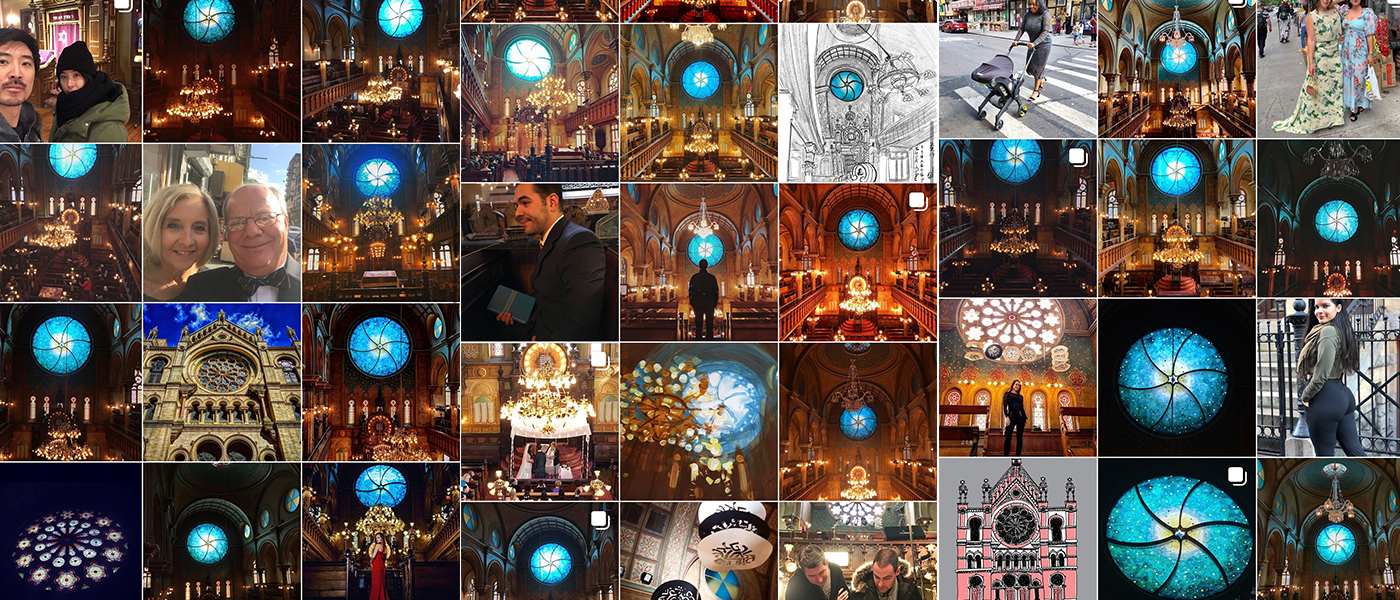
Eldridge Street Synagogue, built in 1887, is one of the United States’s first synagogues. Located on the Lower East Side of New York City, it has stained glass windows and a high dome ceiling. The synagogue flourished until the 1930s; by the 1950s, the sanctuary was no longer in use. In 1986, a restoration project began, and in 2007, the synagogue reopened as the Museum at Eldridge Street. In 1996, it was designated a National Historic Landmark.
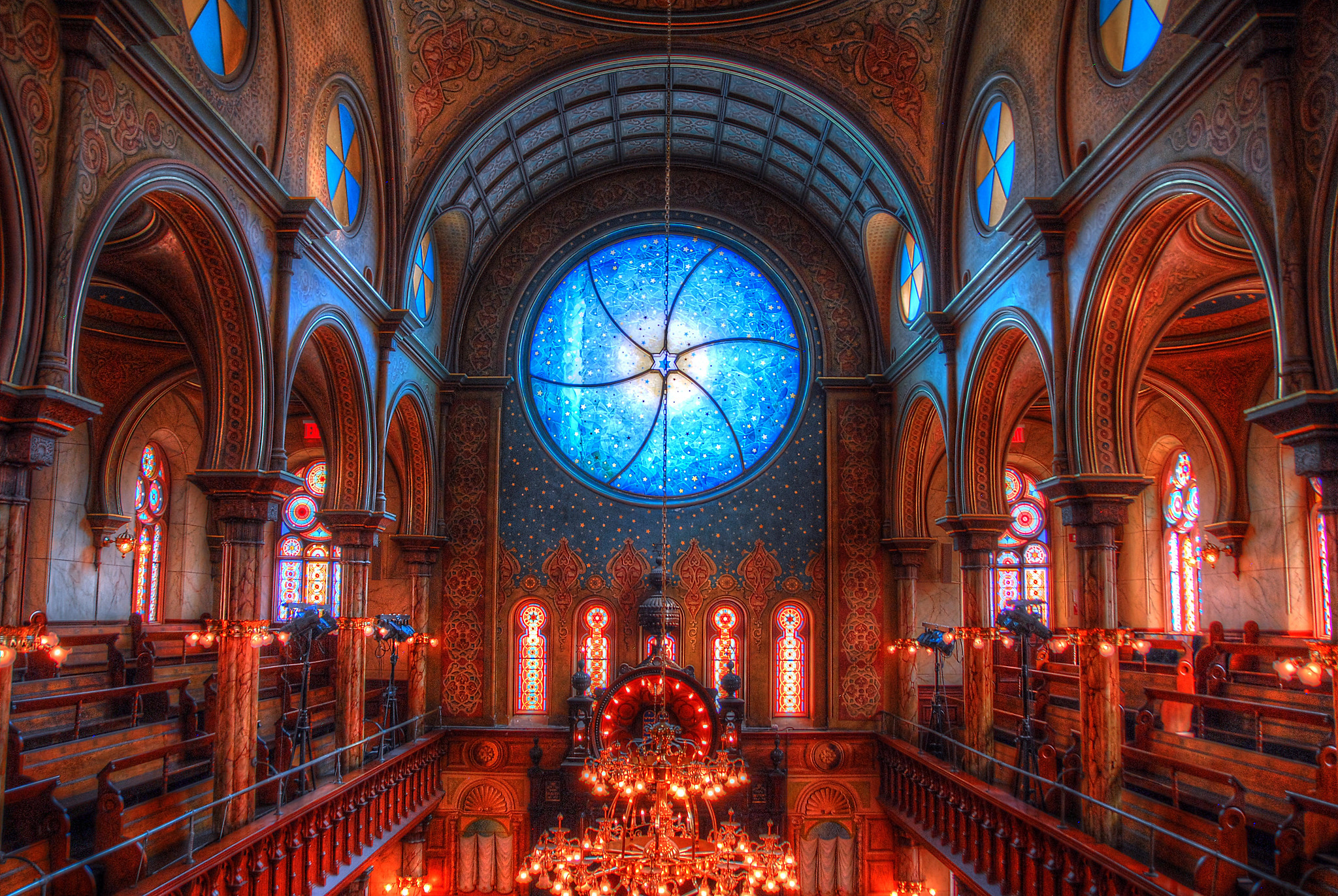
What makes it Instagrammable: As you can see, that gorgeous stained glass window (by artist Kiki Smith and architect Deborah Gans) features in most posts. Scroll through posts here.
Grand Synagogue of Edirne
Edirne, Turkey
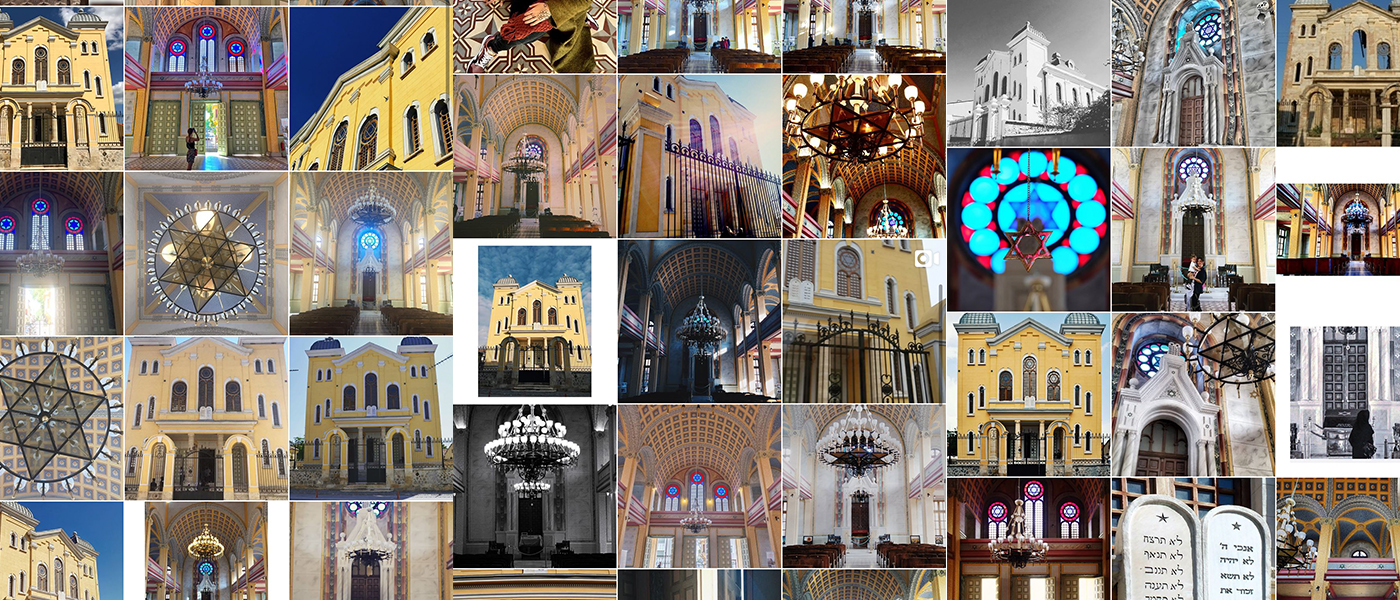
The Grand Synagogue of Edirne, also called the Adrianople Synagogue, is a Sephardi synagogue in Edirne, Turkey. (Edirne was previously called Adrianople.) The synagogue was built between 1906 and 1909, after the 1905 Great Fire of Adrianople destroyed 13 smaller synagogues. It became the largest synagogue in Turkey. By 1983, the synagogue was largely abandoned, as most Jews in Edirne had left for Israel or elsewhere. It fell into disrepair:
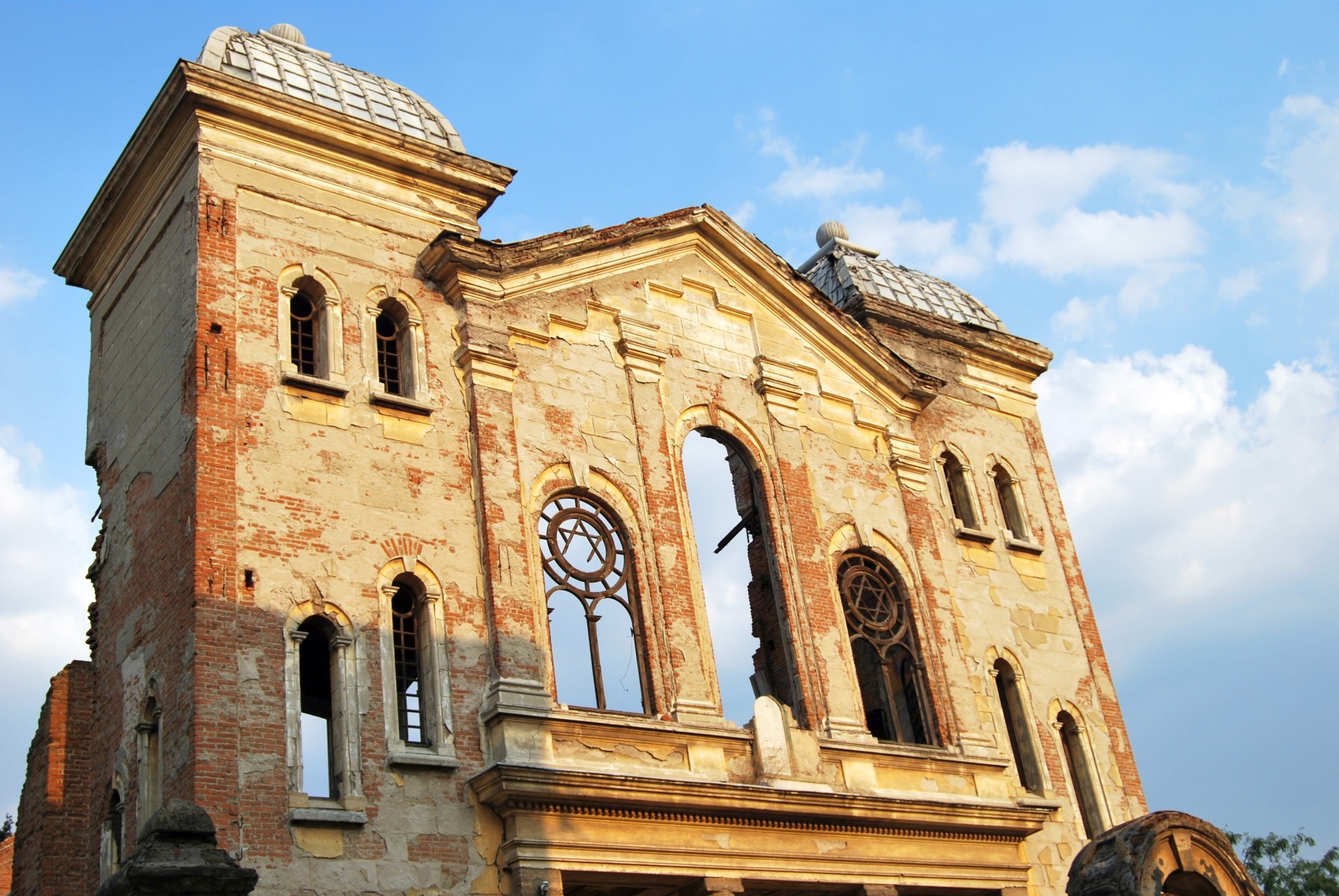
The synagogue was restored, and reopened in 2015.
What makes it Instagrammable: the gorgeous yellow exterior; the star of David light fixture; the blue stained glass. Scroll through posts here.
Subotica Synagogue
Subotica, Serbia
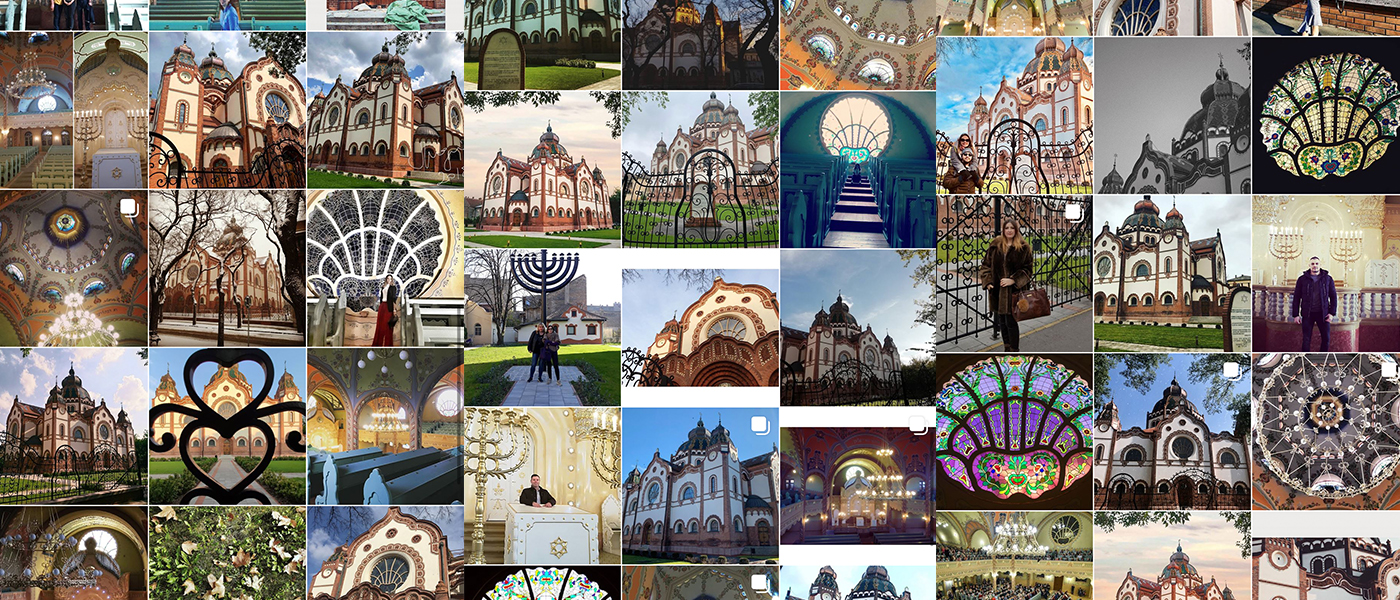
Built in 1902, Subotica Synagogue “is among the most impressive examples of art nouveau ecclesiastical architecture in the region.” When it was built, the town was part of the Austo-Hungarian Empire. Following World War II, the decimated Jewish community was unable to maintain the synagogue. Like so many other synagogues on this list, the building fell into disrepair. In 1979, the community gave the building to the city; in the 1980s, it was used as an avant-garde theater. Restoration work began, then stalled during the Yugoslav Wars of the 1990s.
The World Monument Fund (WMF) designated the synagogue as one of the most endangered buildings in 2000; eventually, it became a WMF project in tandem with the Hungarian government.
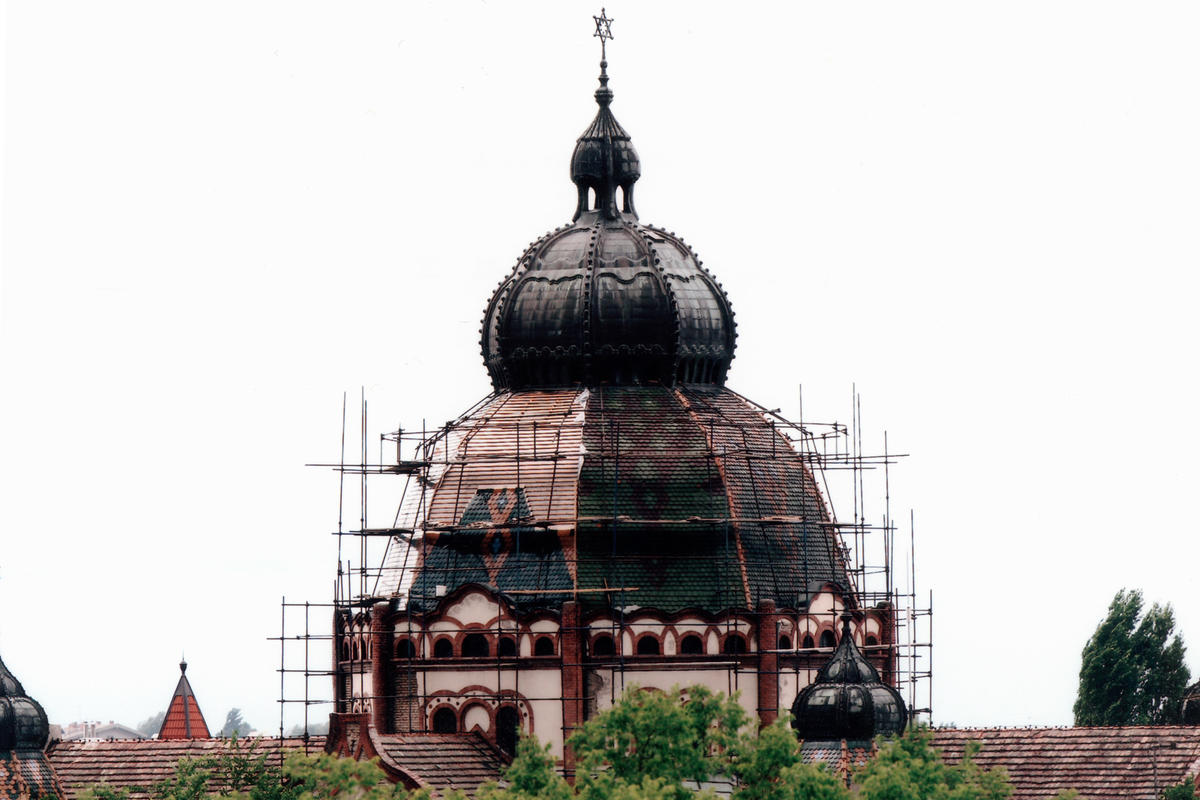
The building, which reopened in 2018, is now part of a “cross-border tourism initiative” with Szeged, Hungary.
What makes it Instagrammable: the distinctive architecture. Scroll through posts here.
Beth Sholom Congregation
Elkins Park, Pennsylvania, United States
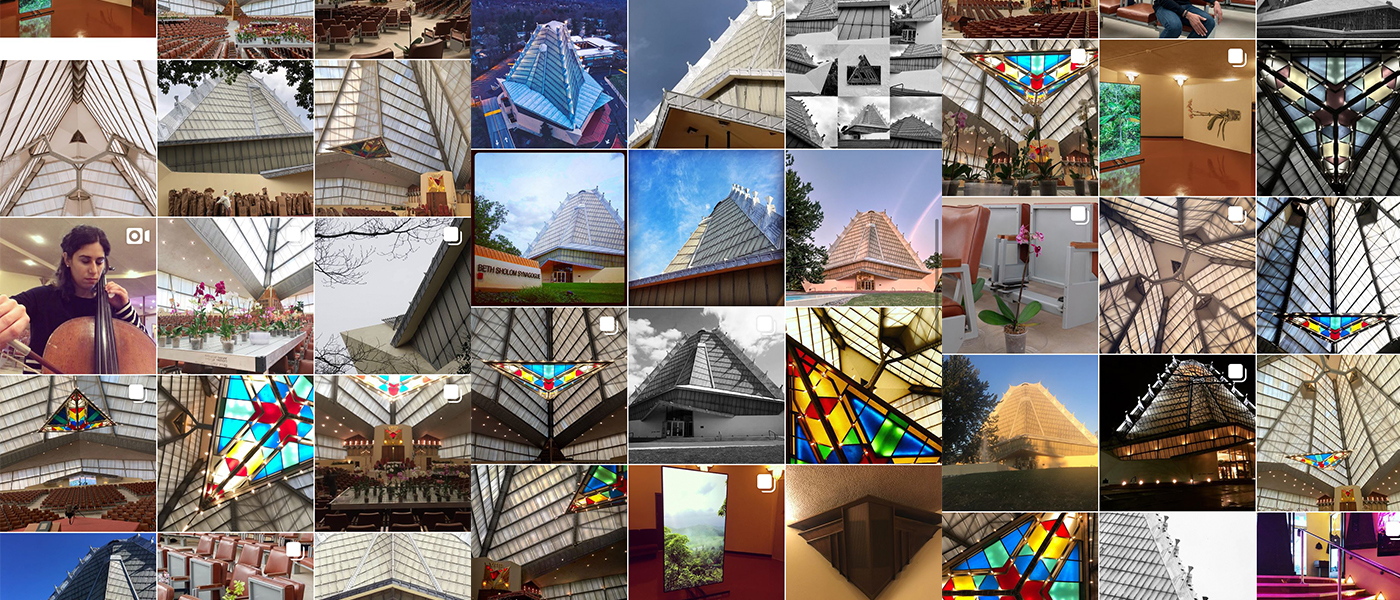
The Beth Sholom Congregation has the distinction of being the only synagogue famed architect Frank Lloyd Wright ever designed. Completed in 1959, the synagogue is a “modernist evocation of an ancient temple” — in a Philadelphia suburb. Wright himself referred to it as a “luminous Mount Sinai.” It was designated a National Historic Landmark in 2007.
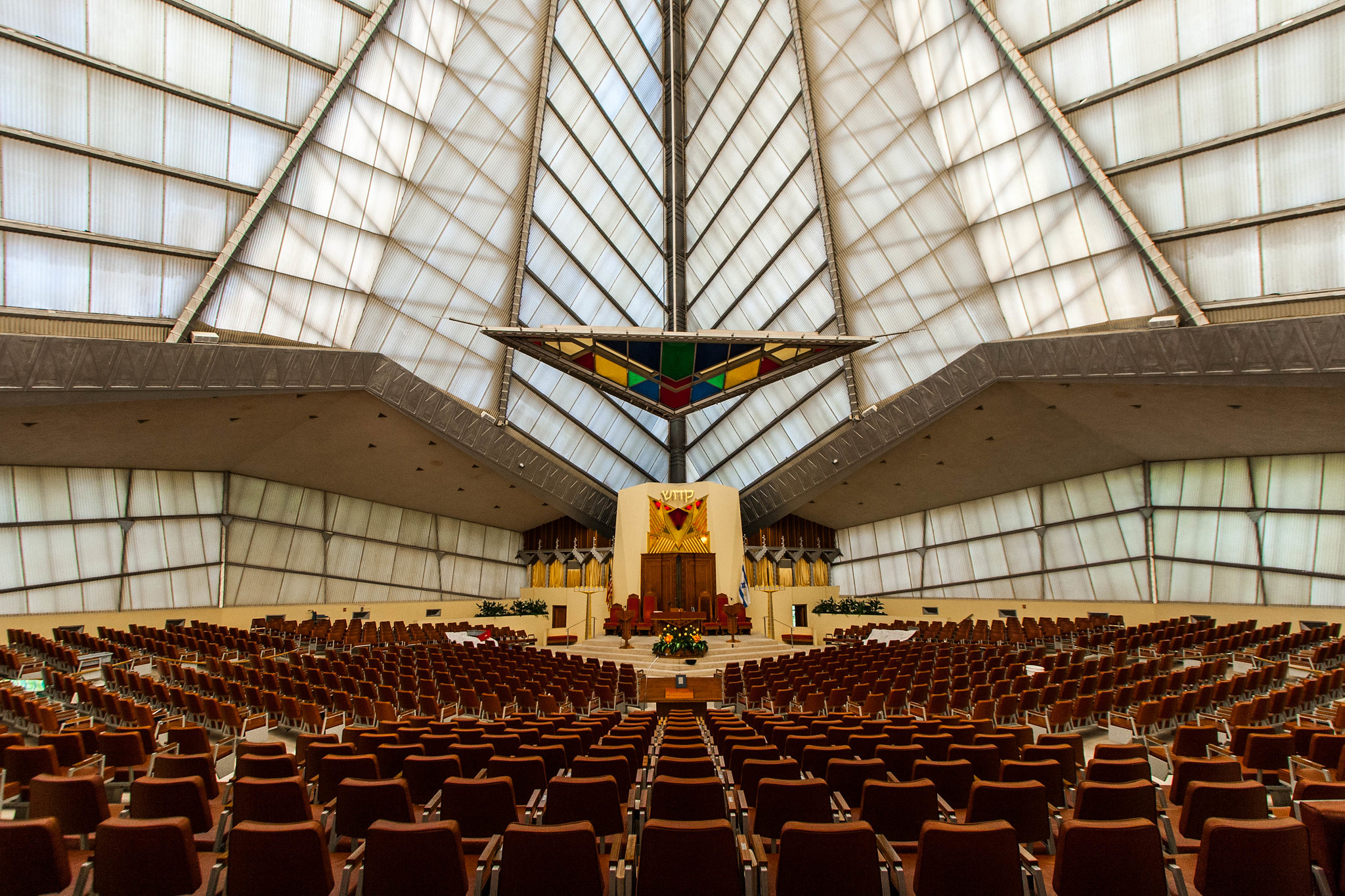
Unlike most synagogues on this list, the synagogue is both an active congregation and open to the public for tours, which is a “delicate balancing act.”
What makes it Instagrammable: the pyramidal glass tower. Also, y’know, Frank Lloyd Wright. Scroll through posts here.
Keneseth Eliyahoo Synagogue
Mumbai, India
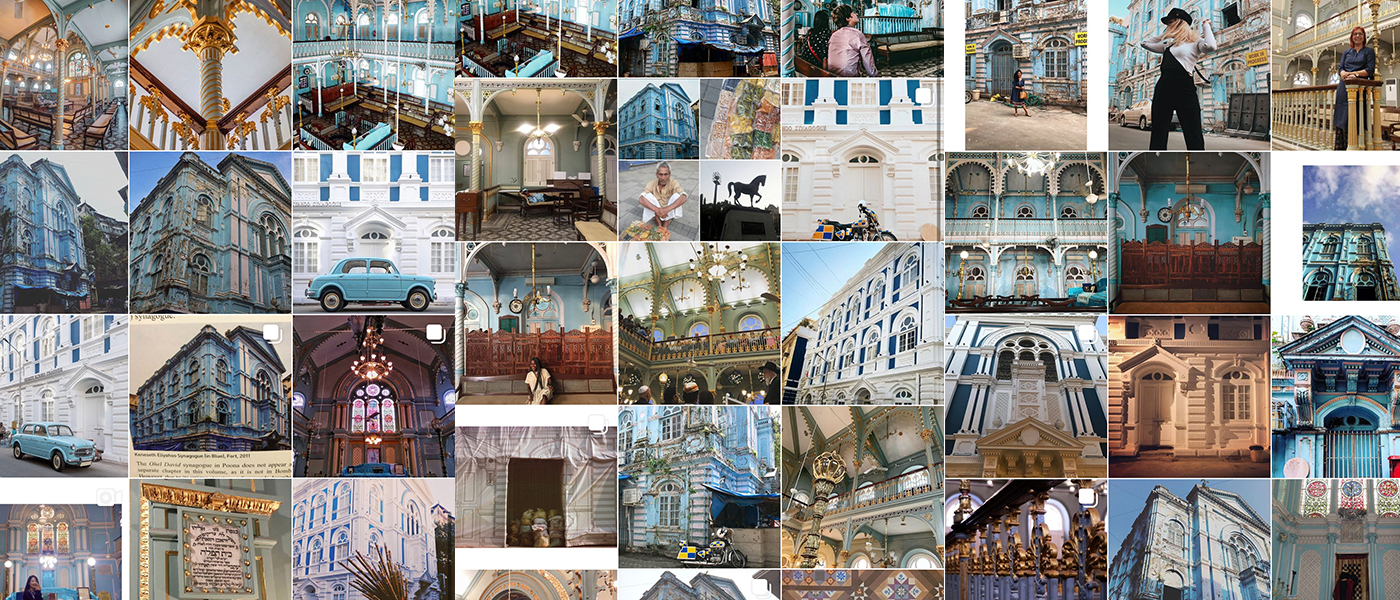
The Keneseth Eliyahoo Synagogue, also called the Knesset Eliyahho Synagogue or the “Blue Synagogue,” was constructed in 1884 and is the city’s second oldest Sephardic synagogue. Designed by Bombay architects, it was built in a classical revival style. The synagogue served a wide range of Jewish communities — from the Bene Israel, Baghdadi Jews, to Iraqi Jews who fled Iraq following the Farhud pogrom in 1941. After the horrific terror attack in Mumbai in 2008, where among other causalities, six were killed at the local Chabad House, a memorial was held at the Keneseth Eliyahoo in 2009.
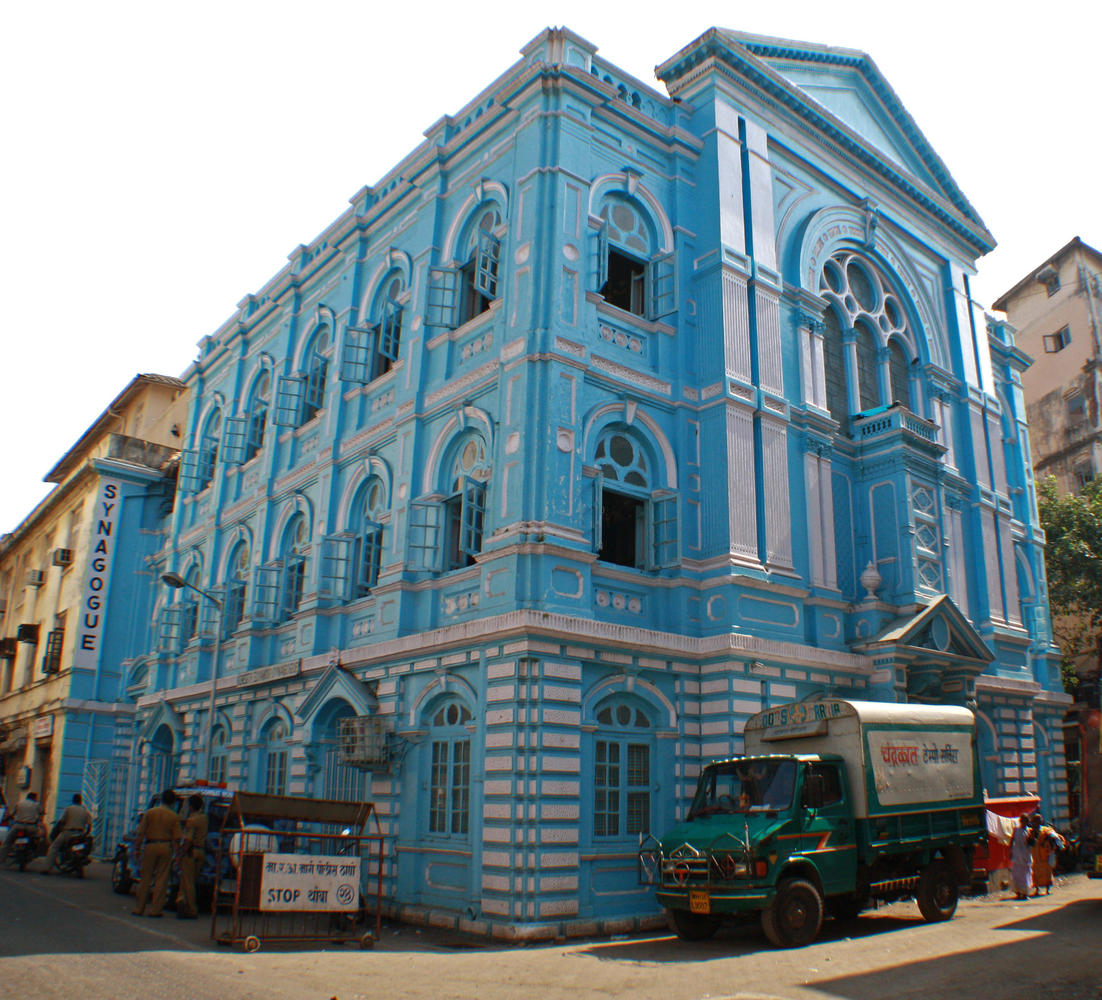
Beginning in 2017, the synagogue was restored by the World Monuments Fund in partnership with the JSW Foundation, and work was completed in January 2019.
What makes it Instagrammable: The blue facade and interior. (Blue is big on Instagram, if you can’t tell yet!) Also, gorgeous stained glass windows. Scroll through posts here.
Neue Synagogue
Berlin, Germany
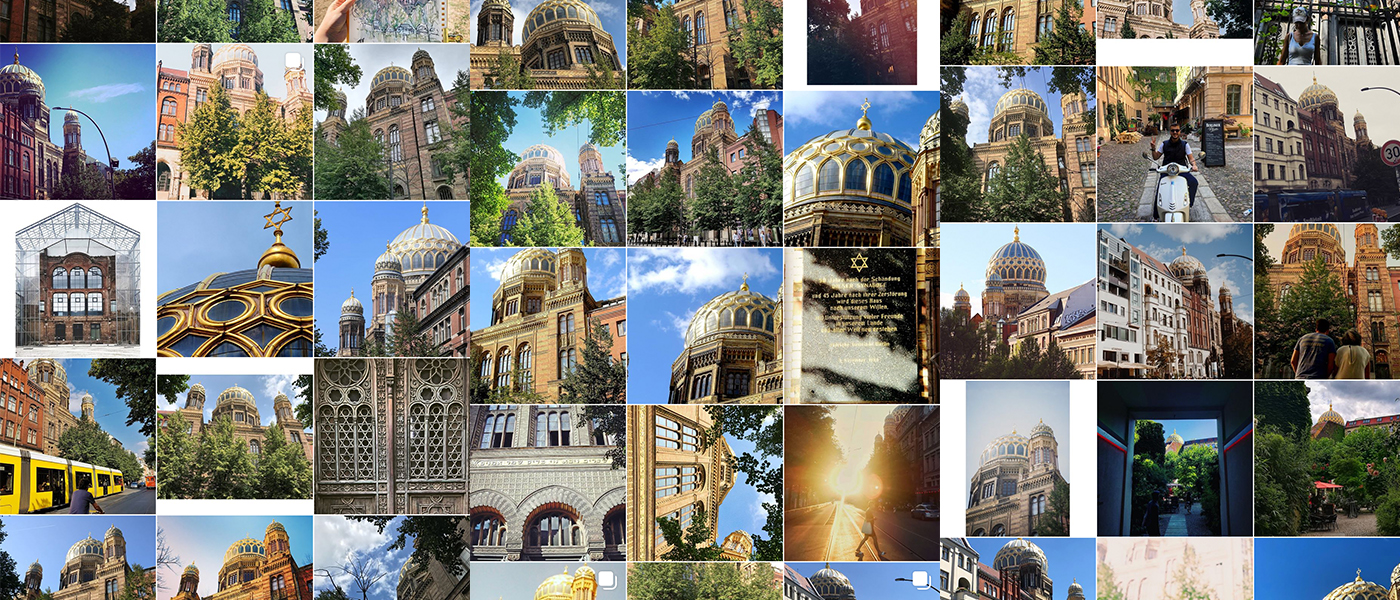
The Neue (New) Synagogue was built between 1859 and 1866, becoming the main synagogue of Berlin’s Jewish community. At the time, it was the largest synagogue in Germany. On Kristallnacht (The Night of Broken Glass) on November 9, 1938, a Nazi mob broke into the synagogue, destroyed the Torah scrolls, and set fire to the interior. A local police officer, however, arrived and allowed the fire brigade to enter — saving the synagogue from total destruction. But not for long; during World War II, Nazis used the synagogue as storage, and during the Battle of Berlin, air raids completely destroyed it.
In the late 50s, most of the building was torn down. From 1988 to 1993, however, reconstruction efforts began, and the Neue Synagogue reopened in 1995.
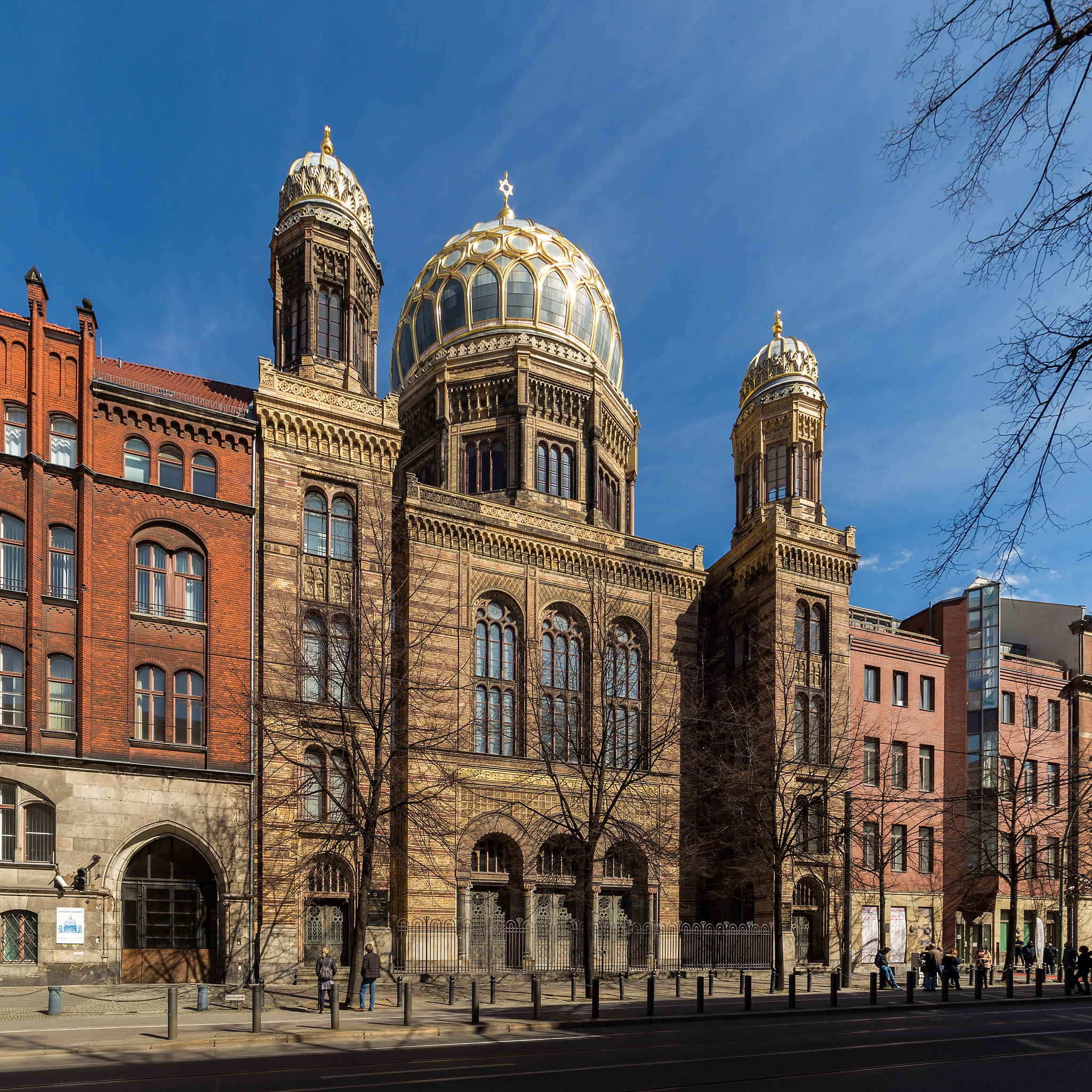
What makes it Instagrammable: that dome tho. Scroll through posts here.
Abuhav Synagogue
Safed, Israel
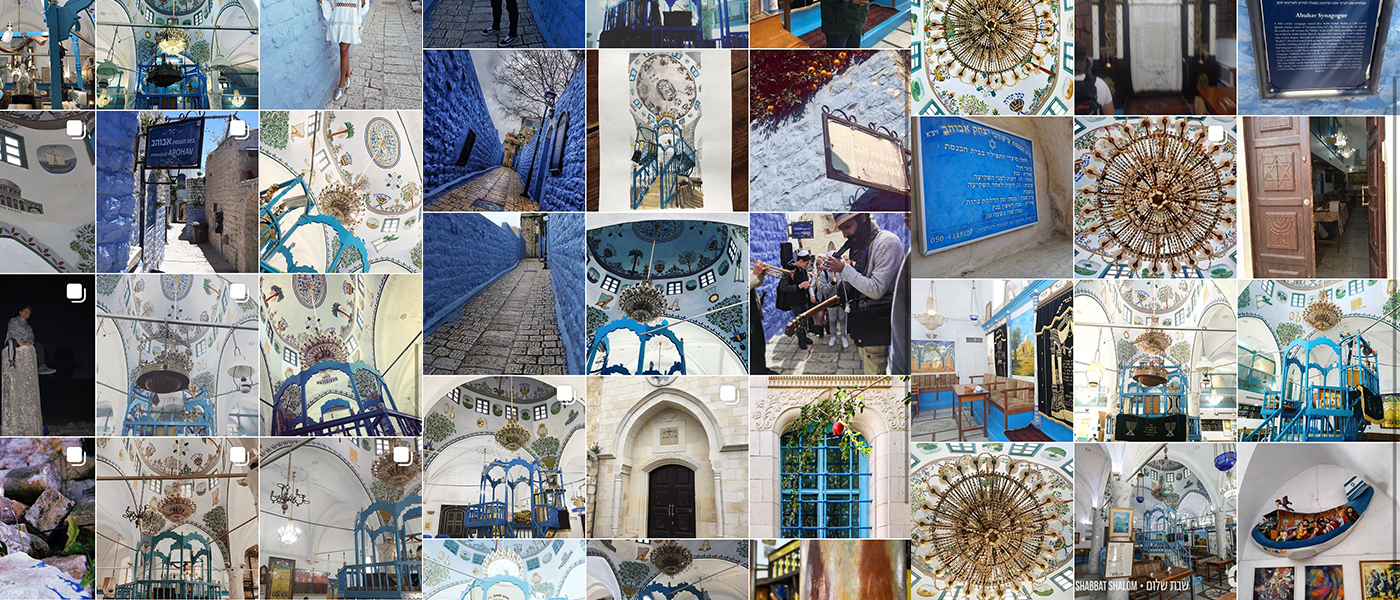
The Abuhav Synagogue is a Sephardic synagogue built in the 1490s after the expulsion of Jews from Spain; it is named for Rabbi Isaac Abuhav. In 1837, an earthquake almost completely destroyed the synagogue, but it was rebuilt. Kabbalist symbols are incorporated into the design of the building: “In accordance with Kabbalah tradition, the design of the synagogue has numerical significance: one bimah, two steps to it, three Arks, and so forth.” Plus, “the interior dome is decorated with depictions of musical instruments used in the Temple in Jerusalem, symbols of the tribes of Israel, and four symbolic crowns.” The synagogue is home to the oldest Torah scroll in Safed.
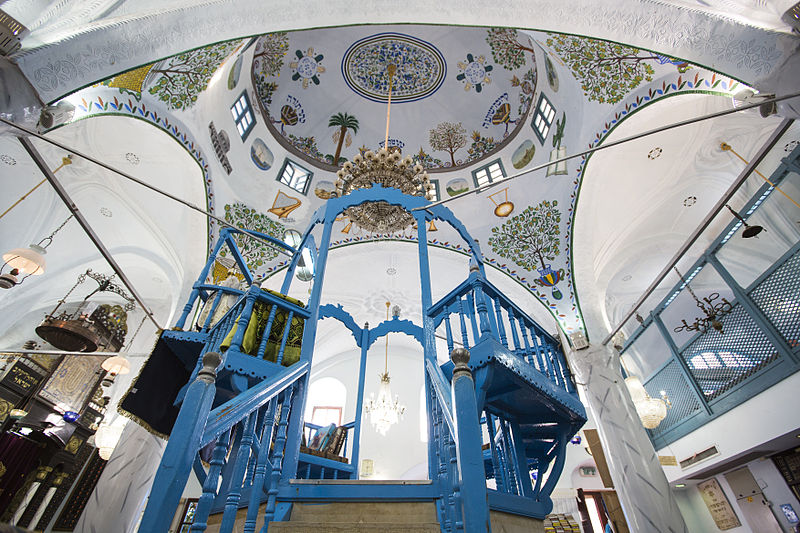
What makes it Instagrammable: the bimah is really unique (and blue!), the dome is gorgeous with intricate decorations. Did we mention the blue? Scroll through posts here.
Jubilee Synagogue
Prague, Czech Republic
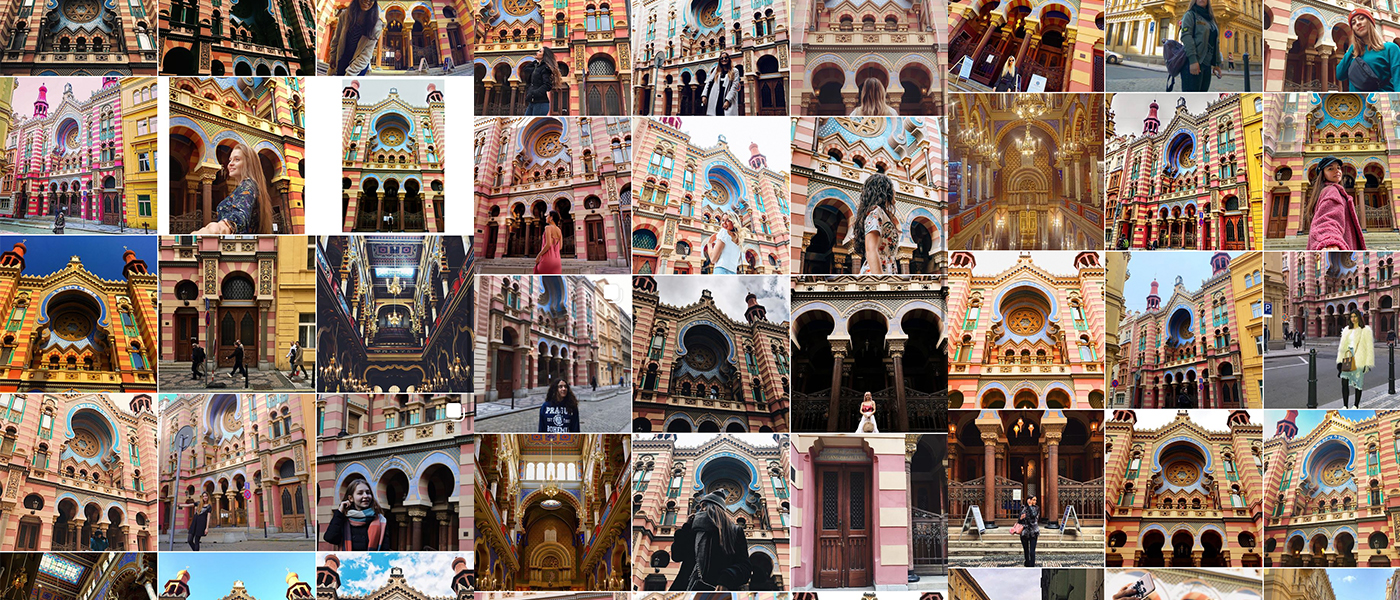
The Jubilee Synagogue was built between 1903 and 1906 and named in honor of the golden jubilee (50th anniversary) of Emperor Franz Joseph I of Austria. After Czechoslovakia became independent in 1918, it was called the Jerusalem Synagogue — they didn’t want to reference their former Emperor. However, the name Jubilee has kind of stuck. The style is a blend of art nouveau and Moorish revival. It is not located in Prague’s Jewish ghetto, where there are six synagogues. (One of which, the Pinkas Synagogue, is now a Holocaust memorial.) It was not destroyed during World War II because the building was used to store confiscated Jewish property. In 1992, conservation work began on the synagogue and in 2002, restoration work was completed.
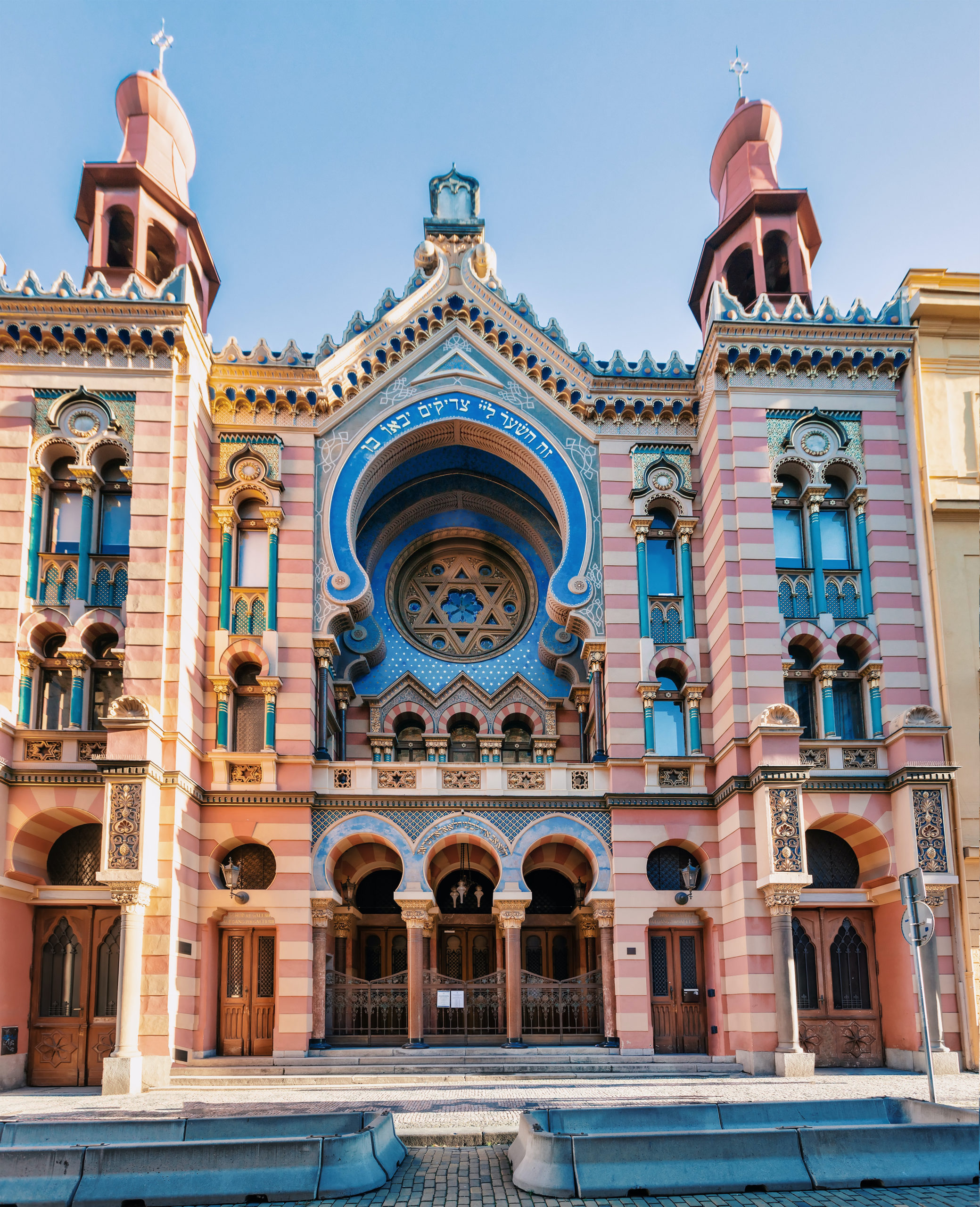
What makes it Instagrammable: The entrance — the colors, the arch — is Instagram bait before Instagram bait was even a thing. Scroll through posts here.
Tag us on Instagram @hey.alma in photos of the most gorgeous synagogues you’ve visited! We love seeing your photos.
